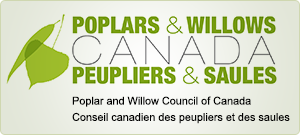| ID |
Unique number for the entry. |
3 |
| Name |
The data that identifies the family (population) or the clone by a number and/or name. |
WN185.01 |
| Alternative |
Another name that is commonly used with the clone or the family. |
|
| Family |
If the entry is a population then the seed lot number is shown. If the entry is a clone, the family number is shown, if known. |
|
| Family comments |
|
|
| Sex |
M (Male), F (Female), U (Unknown), or B (Both) |
U |
| Genus/Material Type |
PC (Populus Clone), PF (Populus Family), SC (Salix Clone), SF (Salix Family), PO (Pollen) |
PC |
| Source Type |
BR (Bred), OP (Open Pollinated), SC (Selected Cutting) or SC-OP (Selected Cutting from an OP family), WS/WC (Wild Seed/Wild Cutting), or NA (Not Available/Not Applicable) |
NA |
| Category |
PPN (Pure Poplar species - Native), PPNN (Pure Poplar species - Non-Native), HP (Hybrid Poplar), HPN? (Hybrid Poplar Native - putative), HA (Hybrid Aspen), NH (New Hybrid >1998) (seedlots only), W (Willow), PWN (Pure Willow Native), CD86 (1986 register). |
HP |
| Female parent |
The species name(s) of the female parent, for example: deltoides. Parentheses are used to distinguish between parents in three-species clones. |
maximowiczii |
| Female parent clone |
The name(s) and/or number of the female that was used to produce the clone, for example: alba (A69) × tremula (E12), ‘alba’ is entered in the Female Parent field and ‘A69’ in the Female Parent Clone field. Parentheses are used to distinguish between parents in three-species clones. |
QB-77592 |
| Male parent |
The species name(s) of the male parent, for example: tremula. Parentheses are used to distinguish between parents in three-species clones. |
deltoides |
| Male parent clone |
The name(s) and/or number of the male that was used to produce the clone, for example: ‘tremula’ is entered in the Male Parent field and ‘E12’ in the Male Parent Clone field. If a putative parent is known but not verified, a question mark is added after the species (e.g.: nigra?). Parentheses are used to distinguish between parents in three-species clones. |
SBC-M01-07 |
| Year bred |
The year that breeding or collection took place - a 4 digit number, for example: 1980, or NA (Not Available/Not Applicable). |
2001 |
| Year selected |
The year the material was selected (4-digits) or NA (Not Available/Not Applicable). |
2003 |
| Year released |
The year the material was released for commercial use (4-digits) or NA (Not Available/Not Applicable). |
NA |
| Hybrid designation |
Throughout the development of this database, it became clear that there are a number of Latinized names, all preceded with '×', commonly used in naming hybrids (e.g. balsamifera × deltoides is known as ×jackii). The hybrid designation is included to improve the search capability of the database. There is one caveat, however: there may be many examples, particularly with the 1986 data, where the exact hybrid lineage has not been scientifically verified, so please use this only as a search tool, unless the designation has been appropriately confirmed. All cultivar names are capitalized. |
|
| Tested |
Y (Yes) or N (No) or U (Unknown) |
N |
| Current Status |
Indicates if the clone is in a trial, Y (Yes), or N (No) |
Y |
| Source Location |
The geographic location where the material was obtained from. |
Indian Head, Saskatchewan |
| Contact |
The name of the organization that is responsible for the administration of the material, e.g.: AAFC-PFRA Shelterbelt Centre. |
AAFC-PFRA Shelterbelt Centre |
| Commercial |
Y (Yes) or N (No) field to indicate if the clone is a current commercial clone. |
N |
| Contact info |
|
|
| Comments |
|
|
| Data source |
|
13_AAFC.xls |


